The Conciliatory Institute 2.0
An Institute is a society or organization having a particular object or common factor, especially a scientific, educational, or social one. (I hope I’m approaching thar definition here).







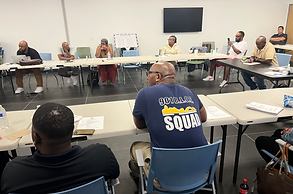
America’s systemic challenges are rampant
From a broken healthcare system to corrosive racial inequality, from rapacious corporations to a climate crisis, the need for robust, fact-based storytelling that highlights injustice and interrogates the day-to-day mundanity of racialized and cataclysmic race relations, in a no-nonsense quest to offer solutions to deep, seemingly impossible issues is mandatory.
There may be a cure for racism
The deep wounds could, in time, be healed but the healing process would be intricate, must be deliberate and will require honesty and commitment from those who have previously remained silent.
We are thoroughly convinced that we need a conciliatory spirit unleashed, but conciliation cannot be accomplished without recognition. Additionally, we know that hate attacks civility and community and escalates into the disease of racism and racism hurts everyone.
Structural racism is about how race infects and distorts equal opportunity
As a nation, people have placated themselves with the concept of meritocracy, and by insisting that we just don’t see race. This makes people feel progressive. But to claim not to see race is to demand compulsory assimilation. Color-blindness does not accept the existence of structural racism or a history of white racial dominance. Indulging the myth that we are all equal denies the economic, political, and social legacy of a society that has historically been organized by race.
Blackness has been politicized against the will of Black people, because racism has given it meaning
This is a situation Black people didn’t choose, but cannot willfully ignore in an effort to instill some sort of precarious, false harmony. And, though many are happy to console themselves with a doctrine of color-blindness, the huge differences in life chances between white and non-white people prove that while it may be preached by our institutions, it is not being practiced.

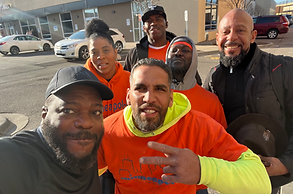



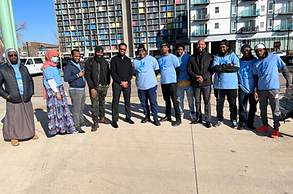


Color-blindness is used to silence talk about structural racism while we continue to fool ourselves with the lie of meritocracy
The reality is that, in material terms, we are nowhere near equal. This state of play is violently unjust. The difference that people of color are all vaguely aware of from childhood is not benign. It is fraught with racism, racist stereotyping and, for women, racialized misogyny.
The Conciliatory Institute is important because of the need for a Black run organizing initiative committed to an asset-based, multi-cultural intension toward abundance. We are devoted to the truth that Black Lives Matter and we are clear that the white supremacist ideology insisting that there’s no room for the masses in this world society is not acceptable.
Our Theory of Change includes a belief that the world can be transformed through a commitment to rigor relative to building relationship across ideology
The people most affected by racism and exclusion must set an agenda and set out on a trajectory for cross-cultural relationship building (series of 1-1s focused on race and racial attitudes), not only as it relates to political party affiliation or a conservative versus liberal fight, but, even the more complex and potentially much more important engagement across the chasms of centrists to fringe operators that exist on the right and the left.
We will conduct courageous listening campaigns and community wellness projects steeped in deep relationship building and accountability with a bent toward creating a meaningful dialogue between what has been and what could be by highlighting the potential of powerful courageous conversations steeped in research and a radical commitment to building power for the most excluded of our global society.
We are creating, through our work and the work of our partners, an opportunity to meet the polarization and racial anxiety with a chance to bridge across race, class, faith, and status so we may become a new people, where all belong.


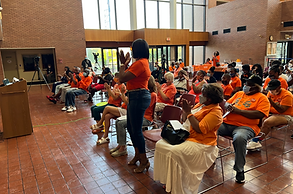




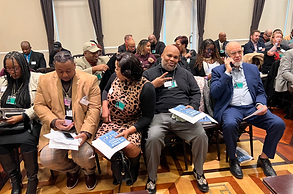
We believe the path forward begins with us choosing to belong to each other, and from this choice we will have the power to create the conditions that allow our families to thrive in a world that celebrates our diversity.
The Conciliatory Institute is a project to explore the vast opportunity for cross-racial expression
Committed to Courageous Conversations, we deal directly with the root causes of exclusion while concentrating on the social and historical factors that, properly presented, will unite us.
We deliberately build relationships through cultural awareness, community interaction and listening campaigns in a concerted movement to celebrate and encourage accountability across difference.
We, at the Conciliatory Institute agree with the current data that suggests 4 steps that begin the fight against bias.
1
Children and families will be empowered by access to full range of high-quality resources located in their communities that support their healthy development.
5
Child and family outcomes in communities and neighborhoods served by RFS will be measured, monitored and reported.
2
Service providers will deliver effective, culturally relevant services to people in local communities and neighborhoods in response to their specific needs.
6
Governing systems will be educated and enhanced for robust transformation
3
Churches, businesses and other stakeholders will partner with local communities and neighborhoods to effectively meet the needs of local residents.
7
Conduct an inventory of existing policies, protocols and practices among members related to law enforcement interactions
4
Volunteers will deliver effective, culturally relevant services in communities and neighborhoods in response to local residents’ needs.
We will reach out to families at schools, faith institutions, community centers and public squares of all kinds. We will offer a style of interaction based on people engaging in one-to-one conversations, story-telling, listening campaigns, artistic expression, engaging in learning seasons consisting of group book readings and cross-cultural group building.
What are the stages of consensus building?
We have identified five steps in the consensus building process:
-
convening
-
clarifying responsibilities
-
deliberating
-
deciding
-
implementing agreements.
-
The key problems for ad hoc assemblies (as opposed to permanent entities) are organizational.
-


Steps
Over the course of the first year, the interdisciplinary team will hone a process for monitoring and evaluation of encountered individuals. There will be a similar process for monitoring a plan for evaluating a mental health policy and plan. We will accomplish this in 5 steps
In the end, we project a 30% reduction in local jail populations in participating cities. Additionally, 1000s of BIPOC will receive the benefits of a highly evolved, well-designed process that honors their struggle and creates an opportunity for treatment and subsequently, jobs.
1
Clarifying the purpose and scope of the monitoring and evaluation,
3
Assessing and managing ethical issues,
2
Identifying the evaluators and funding for the evaluation,
4
Preparing the operational plan for the evaluation,
5
Analyzing the evaluation data, including unintended outcomes, and reporting the results.
